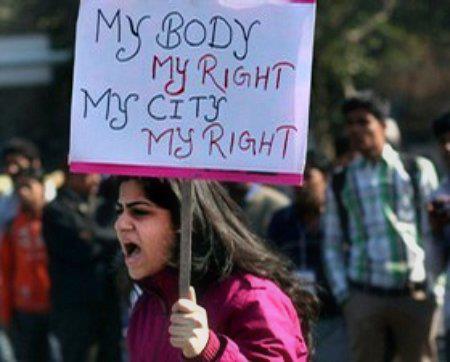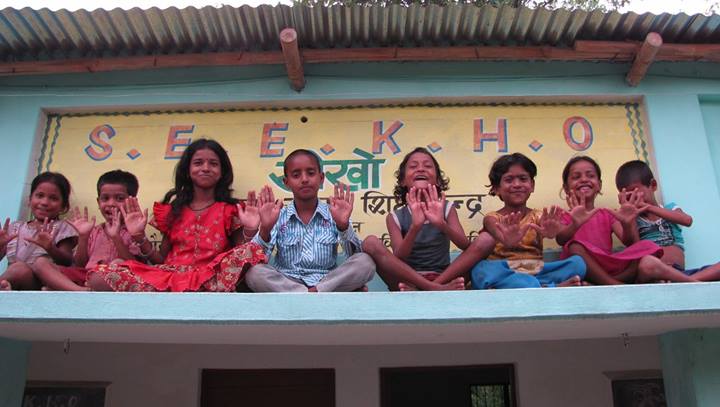Indian Television: The New Medium of Feminism

Rape isn’t new to India. Every single day, innocent women are raped and beaten to death by men in regular places that they thought they were safe in. Every single day, women and men protested with passion and determination, willing to come face to face with the police and willing to get thrown in jail, if it will make a difference to their home. But, publicity was limited and frankly, few people cared until the 2012 Delhi gang rape. A 23-year old woman assumed she was getting on a regular bus that would take her home. She was coming from a movie with a male friend at 9:30pm (consider the fact that in India, it is generally light outside at 9:30, no matter the season). The bus deviated from its normal route and the driver and 5 other male passengers began verbally harassing the couple. Feeling uncomfortable, the male friend tried to get off the bus. Within minutes, he was bashed in the head with a rusty iron rod, gagged and left unconscious on the bus. Using the bloody iron rod, the men beat the woman and raped her while the bus was in motion. Doctors suspected that the bloody, rusty rod was also used for penetration. Afterwards, the couple was thrown off the moving bus and if they hadn’t rolled out in time, would’ve had their limp, beaten, bloody bodies crushed by the six-wheeler. Within days, she was pronounced dead.
That event was the breaking point, and rightfully so. It was a reality check for the entire world.
Not only were we exposed to the disgusting, brutal, and red realities of India, but we were forced to act on it. And finally, after years of ignoring the unreported, obscene rape problem in this country, India finally took notice to those taking action. And without a doubt, India was taking action. India refused to stand for it. Aggressive protests were strewn across the entire nation. Angry congregations of women and men battled with Rapid Action Force. People sat at two major Indian locations, the India Gate and Raisina Hill, home to the Parliament of India and home to the President of India himself. People marched in silence in Kolkata. Metro stations had to close down due to protesters constantly crowding out their stations. The protests spread to Nepal, Sri Lanka, Pakistan and beyond. Social networks such as Facebook and WhatsApp created protests of their own, leading to thousands signing online protests.
And these protests weren’t without consequences. Most of the protesters were immediately arrested, after being shot with water cannons and tear gas shells.
“Kulsoom Rashid, 27, rubbed her eyes and said she had been tear-gassed. “This is how they are responding,” she said, seething. “Hundreds of rapists are running scot-free, and the entire Delhi police is standing here to stop people like me?””

Now, “the world’s largest soap opera industry” joins the bandwagon, ready to bare the consequences.
Indian serials reach approximately 246 million households, and now, that reach comes with responsibility.
Until recently, serials saved for women for either 1. Romantic roles or 2. Submissive roles. Often the two overlapped. These women were clumsy, uneducated, and lived to give coffee to their husbands every morning. But times are changing, and media has made the choice to change as well.
“I disagree that we’re just here to entertain — if we’re not driving social change, we’re not doing our job,” Kovin Gupta, a screenwriter for several Hindi serials, said.
TV is a medium for change, it always will be. And it’s nothing but excellent that people are realizing this.
“A husband helps his wife become a policewoman against the family’s wishes. A child bride becomes a respected voice of reason in her family. A modern woman questions wearing the traditional head veil in her husband’s new home. A female doctor holds a position of power in her town.”
Indian families tend to be conservative, stuck to their traditional ways of life by societal boundaries for people who aren’t healthy males. But as long as media is willing to break traditional boundaries, young generations will be capable of understanding society in a different light, and TV producers are realizing this. One day, the entirety of India will be full of people who believe in equality, and who see that events like the Delhi gang rape are wrong. One day, events like the Delhi gang rape will be in history textbooks, and children will cringe as they read about an innocent young woman who died at the hands of inhuman men. Rape won’t be something that “just happens,” and it won’t be something considered inevitable. Rape will, once and for all, be a punishable act, and it will be stopped.
There may not be a direct correlation between the spark of feminism in television and this event, but it’s important to include the fact that just on Friday, April 4, 2014, an Indian court sentenced three rapists to death, and a fourth to life in prison. Prosecutor Ujjwal Nikam stated that:
“This is the first case in India in which the death penality has been given to convicts while the victim is alive.”
India still has work to do, but it can’t be denied that India is making progress, and opinions are finally changing for the better.
Image Attribute: [New York Times and Humans of India]




